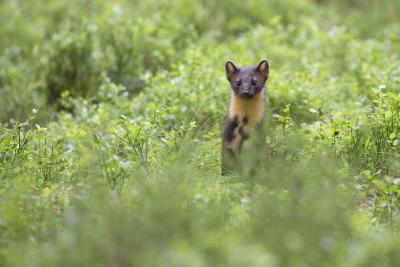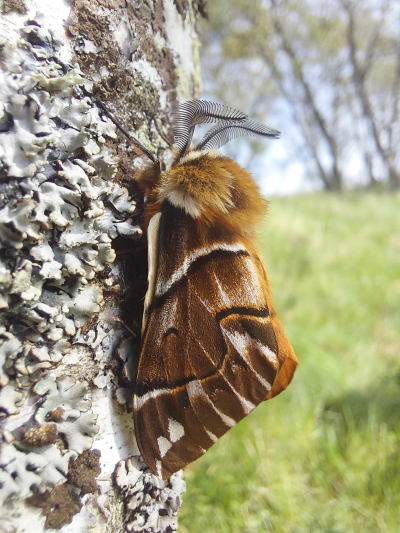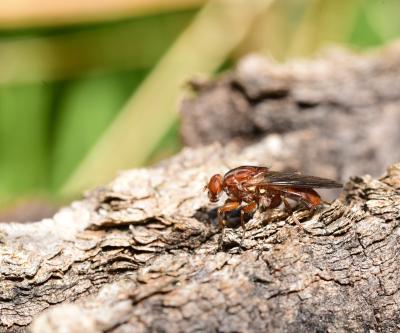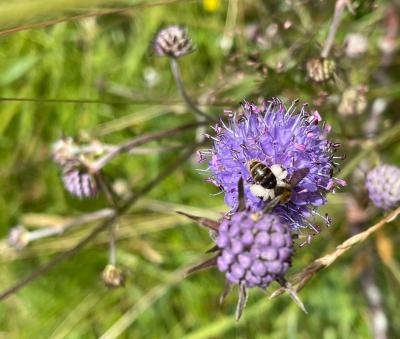Northern damselfly
Coenagrion hastulatum

Northern damselflies are one of the three members of the Coenagrion genus - also known as the Eurasian bluets - found in the UK. They closely resemble the common blue damselfly, but the northern species are weaker flyers so have a smaller range.
Factsheet
Lifespan: A few weeks
Best time to spot: Late spring / early summer
Northern damselflies are members of the Odonata order, just like dragonflies. Damselflies, however, have smaller, slimmer bodies and equal-sized and shaped wings. They also bring their wings together over their back in rest, unlike dragonflies, which spread their wings.
Their limited flight ability means they prefer emergent vegetation (plants found close to the shoreline), typically remaining 20 to 60cm above water. Their lack of flying strength also means northern damselflies don’t engage in aerial combat, while dragonflies do.
Northern damselflies are 31mm long, with a wingspan ranging from 34 to 42mm. You’re most likely to spot them during the most active part of their flight season, in June and July.
Colours and markings vary between the sexes. Males have black and vibrant blue stripes, with a distinct spearhead-shaped marking close to their wings. Conversely, females are mostly black from above and distinctly pea-green from the side. This colour is matched on the male’s head, under his eyes.
These invertebrates catch their food in flight. Northern damselflies feed on live insects that are smaller than them, and have a taste for butterflies, midges, moths, mosquitos and smaller dragonflies.
Did you know?
Northern damselflies are one of the three members of the Coenagrion genus - also known as the Eurasian bluets - found in the UK. They closely resemble the common blue damselfly, but the northern species are weaker flyers so have a smaller range.
Factsheet
Lifespan: A few weeks
Best time to spot: Late spring / early summer
Northern damselflies are members of the Odonata order, just like dragonflies. Damselflies, however, have smaller, slimmer bodies and equal-sized and shaped wings. They also bring their wings together over their back in rest, unlike dragonflies, which spread their wings.
Their limited flight ability means they prefer emergent vegetation (plants found close to the shoreline), typically remaining 20 to 60cm above water. Their lack of flying strength also means northern damselflies don’t engage in aerial combat, while dragonflies do.
Northern damselflies are 31mm long, with a wingspan ranging from 34 to 42mm. You’re most likely to spot them during the most active part of their flight season, in June and July.
Colours and markings vary between the sexes. Males have black and vibrant blue stripes, with a distinct spearhead-shaped marking close to their wings. Conversely, females are mostly black from above and distinctly pea-green from the side. This colour is matched on the male’s head, under his eyes.
These invertebrates catch their food in flight. Northern damselflies feed on live insects that are smaller than them, and have a taste for butterflies, midges, moths, mosquitos and smaller dragonflies.
Did you know?
Northern damselflies mate in wheel formation. The male then lets go of the female and reattaches himself by grasping her neck with the end of his abdomen. Joined like this, they can fly about and lay eggs at various sites. As with all damselflies, the eggs are laid into underwater vegetation. The female uses a sharp blade at the end of her abdomen to cut a slit in which to lay the eggs.
Larvae then spend two years developing underwater, clinging onto plant life before emerging in May. If you go pond dipping, you may be able to identify the larvae by their unique tail fins (caudal lamellae). They also have heavy spotting on the head.
Once it emerges from its underwater birthplace, the larva leaves its skin (called exuvia) and takes a few days to mature into its full adult colouration.
In the UK, northern damselflies are considered extremely rare. They are unique to the Scottish Highlands - found in only 30 sites across the Cairngorms National Park - and favour bog-like conditions such as lochan edges.
Habitat loss and peat cutting are primary factors in the species’ decline. But recent research shows the Northern damselfly’s population is now increasing, perhaps helped by warmer temperatures and new ponds created by recently reintroduced beavers.












